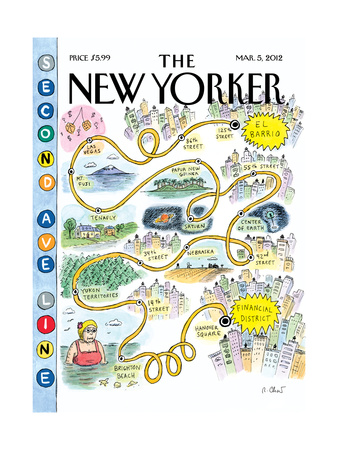Yo guys. Long time no speak. I've just started a new blog on wordpress. It's real pretty.
Hit that shit up. I promise I'll write plenty. Shooting at: arts reviews, science writing, general philosophising. And it won't be anywhere near as all over the place as that sounds.
And here's an awesome picture:
Have a beautiful day.
Lolita Del Rey
Thanks to the arrival of Spotify in Australia (whose incredibly annoying ads have already pretty much completely driven me away) I've been listening to a couple of albums that I would never have actually bought, or gone to the trouble of chasing on Youtube. This is a bit of a problem, seeing as it posts everything you listen to on Facebook. Everyone now knows I've been listening to Lana Del Rey.
I heard her breakout hit, Videogames, on Youtube with everyone else, and loved it as much as everyone seemed to. Her stoner-seductive aesthetic, with the naturally accompanying bored, weed-husky voice, went nicely with the hypnotic smoke-haze looping of the song itself. When she was 'unmasked' as nowhere near as trailer-trash as we'd been meant to think, well, that seemed to work pretty well too. Somehow, rich girl fantasising about life on the hood of a pick-up truck seemed just even more fitting--probably because the music was already way more about fantasy than reality. By the time we found out she couldn't really sing live, the fact could hardly have been less relevant. It just added to the spectacle.
So anyway now I've been listening, the past few days, to the album, which she (or They) have called "Born to Die." It's a predictably top-heavy record: three of the first four tracks are singles, and only one of the remaining eleven. Maybe this goes without saying--no-one expected this to be anything but a pop album. More interestingly, it's also an album that is single-mindedly devoted to character. Throughout, the songs work to build Del Rey's character. The first track, also called "Born to Die," opens with a flourish of strings, then a beat and some backup singer sighing. When Del Rey's voice comes in, it has all the bored/seductive resonance "Video Games" lead us to expect, that combination of fate and apathy. The lyrics, like the music itself, are a baroque redux of Video Games' sexy-stoner imagery. "Video Games" had the flirt of "I heard that you like the bad girls / Honey, is that true?" "Born to Die" has the dragged out, ominous "You like your girls insaaane." Over the whole record, she doesn't break character once. It creates an aesthetic a friend of mine described as "Hollywood sadcore." Not sure whether that's actually his creation or not, but I think it's pretty perfect.
One aspect of that character that is played up on the record is Del Rey's (literal) flirting with innocence. "Video Games" had notes of this; I think one of the song's loveliest moments is the teasingly innocent lift in her voice as she sings the above quoted bad girls line. You don't need to be watching the clip to see her eyelids bat there. But this dynamic gets amped way up in a couple of songs here. I'm thinking "Off to the Races," a song heavy on lines quoted from Lolita. The song starts off muddy and weak, chugging on lines like "he loves me with every beat of his cocaine heart." But it kicks into gear when Del Rey lifts her voice into an innocent squeak and sings "Light of my life, fire of my loins / be a good girl and do what I want."
She channels a Lolita chacter all through the song, an the album as a whole. A later (weaker) track is actually for the book. And we realise something we might not quite have got earlier. Del Rey's character is not just bad girl: often, it is also bad little girl. Creepy. But everyone knows by now that it is all an act, all the way down. The flirts of faux-innocence scattered liberally through Born to Die are part of what lifts the performance into tasty madness. Lana Del Rey is a great fake mirage of dirty insanity. And that's what makes her album so entertaining.
I heard her breakout hit, Videogames, on Youtube with everyone else, and loved it as much as everyone seemed to. Her stoner-seductive aesthetic, with the naturally accompanying bored, weed-husky voice, went nicely with the hypnotic smoke-haze looping of the song itself. When she was 'unmasked' as nowhere near as trailer-trash as we'd been meant to think, well, that seemed to work pretty well too. Somehow, rich girl fantasising about life on the hood of a pick-up truck seemed just even more fitting--probably because the music was already way more about fantasy than reality. By the time we found out she couldn't really sing live, the fact could hardly have been less relevant. It just added to the spectacle.
So anyway now I've been listening, the past few days, to the album, which she (or They) have called "Born to Die." It's a predictably top-heavy record: three of the first four tracks are singles, and only one of the remaining eleven. Maybe this goes without saying--no-one expected this to be anything but a pop album. More interestingly, it's also an album that is single-mindedly devoted to character. Throughout, the songs work to build Del Rey's character. The first track, also called "Born to Die," opens with a flourish of strings, then a beat and some backup singer sighing. When Del Rey's voice comes in, it has all the bored/seductive resonance "Video Games" lead us to expect, that combination of fate and apathy. The lyrics, like the music itself, are a baroque redux of Video Games' sexy-stoner imagery. "Video Games" had the flirt of "I heard that you like the bad girls / Honey, is that true?" "Born to Die" has the dragged out, ominous "You like your girls insaaane." Over the whole record, she doesn't break character once. It creates an aesthetic a friend of mine described as "Hollywood sadcore." Not sure whether that's actually his creation or not, but I think it's pretty perfect.
One aspect of that character that is played up on the record is Del Rey's (literal) flirting with innocence. "Video Games" had notes of this; I think one of the song's loveliest moments is the teasingly innocent lift in her voice as she sings the above quoted bad girls line. You don't need to be watching the clip to see her eyelids bat there. But this dynamic gets amped way up in a couple of songs here. I'm thinking "Off to the Races," a song heavy on lines quoted from Lolita. The song starts off muddy and weak, chugging on lines like "he loves me with every beat of his cocaine heart." But it kicks into gear when Del Rey lifts her voice into an innocent squeak and sings "Light of my life, fire of my loins / be a good girl and do what I want."
She channels a Lolita chacter all through the song, an the album as a whole. A later (weaker) track is actually for the book. And we realise something we might not quite have got earlier. Del Rey's character is not just bad girl: often, it is also bad little girl. Creepy. But everyone knows by now that it is all an act, all the way down. The flirts of faux-innocence scattered liberally through Born to Die are part of what lifts the performance into tasty madness. Lana Del Rey is a great fake mirage of dirty insanity. And that's what makes her album so entertaining.
Unspeakable Acts of Privacy
- Are you single?
- Have you been tested for STDs in the past month?
- What is your favourite sex position?
- Do you have any secret fantasies or fetishes?
- Would you please take off your shirt?
- Kiss me, now.
This was only a small part of a suprisingly ambitious performance put on (and put together) by UQ drama students, under the direction of Zen Zen Zo founder Lynne Bradley. The show 'began' before it actually began, with a form for everyone to fill in with moderately private information, and a privacy policy to sign, a la Facebook. I was already loving the experience, anticipating deliciously confronting public reveals of our private information, foolishly divulged.
From there, the audience was gathered on some Schonell theatre steps, and a troop of aggressive dancers materialised before us, appearing ninja-like from apparently empty surroundings. That was the beginning of an adventure--the term is no exaggeration--that would lead us not just into stranger's cars, but all around an eerily transformed UQ campus. I'd never realised just how 'promenade' promenade theatre could be.
The general feel of prison-camp melodrama gained part of its success from the scattered moments of relief, of quiet--of poetry, even. At one point, I was pulled aside by a girl who delivered a gentle monologue about being a dancer, and the way in which her body no longer felt like her own. These gentler points were not always integrated convincingly into the larger structure of the performance, but they did provide thought-provoking contrasts in tone, as well as some excellent writing and acting.
"Unspeakable Acts" faltered when it abandoned its atmospheric, visceral approach to its theme in favour of more straightforward didacticism. A section on the disturbing iPhone app Girls Around Me, for example, could not have been any preachier, or less theatrical. The messages of the play resonated best when left unspoken.
What was perhaps most impressive about "Unspeakable Acts," though, was its sheer scale. The audience was continually splintered throughout into smaller and smaller groups, all lead through different experiences, rejoining at various points. My experience of the play was only one of many possibilities. My girlfriend and sister, for example, spent time helping one actor stalk another, and described it as a highlight. Maintaining the complexity of this structure, with the careful choreography required to keep everyone where they need to be when they need to be there, over such a large physical area, was a stunning technical achievement.
Congratulations to everyone involved. "Unspeakable Acts" was a genuinely impressive piece of theatre. It's even convinced me to fix my Facebook privacy settings.
MoviePlayPoemPubBeerBookSong (Hysterical and Useless)
(Some distracted reviews). (Sleep deprived reviews also).
Movie: The Avengers
It's hard to review something after reading a review of that something. I read a review that said something about how the acting, the actors, lift a pretty typical superhero movie into a really really good superhero movie, and now that's what I want to say. Maybe I only thought that because of the review. Maybe partly I didn't see the movie, but saw some amalgam of the movie and the review I'd already read. But I did really think myself that the acting made it. Never realised before that Robert Downey Jnr is someone fun to watch. So good. You should see this.
Play: Midsummer (a play with songs)
Funniest sex scene. And then to discover that Japanese rope bondage is apparently not a sex thing? Who knew. (You know, actually, what I thought was innocent wikipediaing suggests that maybe the play mislead me on that front). First half better than the second. Some nice songs. Like a not quite as good Boy Girl Wall. With Scottish accents. But that notwithstanding, not quite as good. You can see this if you like.
Poem: Matt Kahn's Email
Who is Matt Kahn? Should I know that? I know I like this. Emily XYZ makes me feel like it's 1989 in New York, whatever that feels like. JOHN STEWART MILL. JOHN STEWART MILL. JOHN STEWART MILL. (It slopes to the horizon). You should go listen to this.
Pub: The Bridge Club
Not strictly a pub, but it's alliteration! And rhyming! A new club thing upstairs at the Irish club. Saw Oscar + Martin there, who are excellent and were good, despite not being able to hear themselves. Despite also constant screeching feedback. But the point is, there are chandelier things. And wood panels. And one beautiful ceiling. With shamrocks and harps. And underneath, it's all skinny jeans and irony.You should check it out.
Beer: The Quiet American
A splendiferous Little Creatures single batch taking an American hop spin on a Trappist ale. Packs a beautiful punch. How do you review beer? Fruity. Bitter. Alcoholy. Good. You should get some while you can.
Book: Falling Man
This was nice and short last week. Dellilo's got a magic way with a sentence. I read somewhere he worries himself over the heights of the letters in his sentences, the shorts and talls, banging away at a manual typewriter. This one, though, falls a bit flat. All ends up a bit... meh. You should go with White Noise instead.
Song: Vomit
Been playing this all day. So should you.
...And now, so I'll never have to write a review as bad as these again, I'm off to a lecture on reviews.
Movie: The Avengers
It's hard to review something after reading a review of that something. I read a review that said something about how the acting, the actors, lift a pretty typical superhero movie into a really really good superhero movie, and now that's what I want to say. Maybe I only thought that because of the review. Maybe partly I didn't see the movie, but saw some amalgam of the movie and the review I'd already read. But I did really think myself that the acting made it. Never realised before that Robert Downey Jnr is someone fun to watch. So good. You should see this.
Play: Midsummer (a play with songs)
Funniest sex scene. And then to discover that Japanese rope bondage is apparently not a sex thing? Who knew. (You know, actually, what I thought was innocent wikipediaing suggests that maybe the play mislead me on that front). First half better than the second. Some nice songs. Like a not quite as good Boy Girl Wall. With Scottish accents. But that notwithstanding, not quite as good. You can see this if you like.
Poem: Matt Kahn's Email
Who is Matt Kahn? Should I know that? I know I like this. Emily XYZ makes me feel like it's 1989 in New York, whatever that feels like. JOHN STEWART MILL. JOHN STEWART MILL. JOHN STEWART MILL. (It slopes to the horizon). You should go listen to this.
Pub: The Bridge Club
Not strictly a pub, but it's alliteration! And rhyming! A new club thing upstairs at the Irish club. Saw Oscar + Martin there, who are excellent and were good, despite not being able to hear themselves. Despite also constant screeching feedback. But the point is, there are chandelier things. And wood panels. And one beautiful ceiling. With shamrocks and harps. And underneath, it's all skinny jeans and irony.You should check it out.
Beer: The Quiet American
A splendiferous Little Creatures single batch taking an American hop spin on a Trappist ale. Packs a beautiful punch. How do you review beer? Fruity. Bitter. Alcoholy. Good. You should get some while you can.
Book: Falling Man
This was nice and short last week. Dellilo's got a magic way with a sentence. I read somewhere he worries himself over the heights of the letters in his sentences, the shorts and talls, banging away at a manual typewriter. This one, though, falls a bit flat. All ends up a bit... meh. You should go with White Noise instead.
Song: Vomit
Been playing this all day. So should you.
...And now, so I'll never have to write a review as bad as these again, I'm off to a lecture on reviews.
Stealing Stuff (like this post)
Sorry about the lack of posts lately. Hopefully this gem from Slate might make up for it.
 |
CAN I MAKE STUFF UP? |
|
|
|
 |
Journalist
If you make stuff up as a journalist, you will be considered such a liar that the state of California won’t let you become a lawyer. |
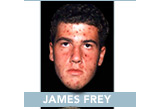 |
Memoirist
If you make stuff up as a memoirist, Oprah will excoriate you on the air, and your publisher will refund duped readers the cost of your book, but you may have a lucrative second career employing young writers to pump out popular fiction. |
 |
Columnist
If you make stuff up as a columnist, you will get suspended. Then you can write your column again. |
 |
Monologist
If you make stuff up as a monologist, Ira Glass will be very disappointed in you, but lots of people will defend the “greater truth” of your story. |
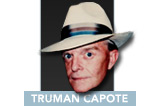 |
Nonfiction Novelist
If you make stuff up as a “nonfiction novelist,” people will call you out on it eventually, but you’ll still go down as a great writer (especially if you die prematurely). |
 |
Humorous Journalist
If you make stuff up as a humorous journalist, the editor-in-chief of The New Yorker will be heartbroken. |
 |
Biopic Director If you make a movie “based on a true story” that includes made-up stuff, journalists will write articles pointing out where you were wrong, but you might win an Oscar anyway. |
 |
Historical Novelist If you make stuff up as a historical novelist, people will point out on Wikipedia that you were wrong and evaluate your claims on TV, but you can still make the bestseller list. |
 |
Period-Piece Showrunner If you make stuff up for your mostly historically accurate TV show, linguists will scrutinize your every misstep and magazine journalists will compare your show to their memories, but you’ll still be a critical darling. |
 |
Humorist If you make stuff up as a humorist, The New Republic will fact-check the dickens out of you, but most people will say your lies are OK, especially if they’re just about your personal life. |
 |
Stand-Up Comedian If you make stuff up as a stand-up comedian, no one will care (unless you lie about where your jokes came from.) |
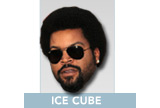 |
Songwriter If you say you had a “good day,” bloggers will fact-check you twenty years after the fact. But they will still love the song, even if it wasn’t exactly true. |
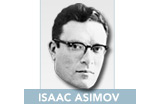 |
Science Fiction Writer If you make stuff up as a science fiction writer, you will be honored as a visionary. (Unless you convince millions that your stories are true and found a church, in which case you will be derided as a nut.) |
 |
Fantasy Writer If you make stuff up as a fantasy writer, you will earn a place in the hearts of children everywhere. But some fundamentalist Christians might burn your books. |
 |
Might get around to posting in more detail about a couple of these. I've been thinking about the Wallace one a bit, of course. Soon! Something soon, I promise.
Fact Checking
Heard of Christian Marclay? "The Clock"? He's the present darling of the art world (or so it seems, from my complete outsider's perspective). "The Clock" is a twenty-four hour video-art piece made up of clips from movies featuring the current time. Sounds gimmicky at first, but reading the details in a terrific New Yorker article has got me pretty fascinated.
There's one sentence in the article I'm interested in here, though. In the section discussing Marclay's irritation with galleries not giving the work appropriate respect, the writer relates an anecdote about a Los Angeles museum wanting to project the work on their outdoor wall. The anecdote is followed by a qualification in parentheses:
I'm probably weird, but this struck me as hilarious. These bracketed A denies verbing B appear in New Yorker articles all the time, but they're usually more like "the notorious arms trader denies dealing with the Taliban" or "Exxon Mobil denies deliberately tarring birds" or "Politician denies the Mafia influence". So the gallery denying outdoor projection was pleasantly tame.
This must, I suppose, be the work of the fact checkers. Reading the Marclay piece, it seems pretty clear that the LACMA denies sentence was a later addition. The degree of fact-checking this implies is intriguing. Did the gallery really suggest projecting the clock outdoors? Talk about a fine-toothed comb.
Fact-checking, it turns out, is pretty much an American phenomenon. The New Inquiry has a really interesting article about this, dissecting its place in American culture. There's also a bit more about the Daisey affair, if that interests you. The London Review of Books has a bit of a lighter, shorter take on fact-checking too. The outsider take on American fact-checking there is pretty interesting.
Anyway, I'm hoping for more slightly ludicrous fact-check clarifications like the gallery denial.
There's one sentence in the article I'm interested in here, though. In the section discussing Marclay's irritation with galleries not giving the work appropriate respect, the writer relates an anecdote about a Los Angeles museum wanting to project the work on their outdoor wall. The anecdote is followed by a qualification in parentheses:
"(LACMA denies suggesting outdoor projection)."
I'm probably weird, but this struck me as hilarious. These bracketed A denies verbing B appear in New Yorker articles all the time, but they're usually more like "the notorious arms trader denies dealing with the Taliban" or "Exxon Mobil denies deliberately tarring birds" or "Politician denies the Mafia influence". So the gallery denying outdoor projection was pleasantly tame.
This must, I suppose, be the work of the fact checkers. Reading the Marclay piece, it seems pretty clear that the LACMA denies sentence was a later addition. The degree of fact-checking this implies is intriguing. Did the gallery really suggest projecting the clock outdoors? Talk about a fine-toothed comb.
Fact-checking, it turns out, is pretty much an American phenomenon. The New Inquiry has a really interesting article about this, dissecting its place in American culture. There's also a bit more about the Daisey affair, if that interests you. The London Review of Books has a bit of a lighter, shorter take on fact-checking too. The outsider take on American fact-checking there is pretty interesting.
Anyway, I'm hoping for more slightly ludicrous fact-check clarifications like the gallery denial.
Lines from the New Yorker (Mar. 5, 2012)
"“This Is Not a Film” was smuggled out of Iran on a flash
drive hidden in a cake.”
“The truth is that punitive, hysterical religions thrive,
while soft, mystical ones must hide their scriptures somewhere in the hot
sand.”
“And then you blink again and it’s three women, only one of
the women is shaped exactly like a vase.”
“But I’ll get back to Russia. I don’t know when. But I’m
still young. Your empire will collapse and I’ll get out of here.”
Blergher + Daisey
I was reading something on my sister's blog about chocolate chips, and I realised that Blogger is rubbish. Not quite sure how that train of thought went. But blogger does seem to be a bit rubbish. I even found a blog elsewhere explaining why Blogger is so rubbish. Seems like Google retains the right to do what they like with your content, for example. Probably meaningless, but annoying in principle. My main complaint is that it is just a bit ugly. Everyone's wordpress blogs look so classy. So I'll be trying to move there sometime soon. Once the class this all goes towards is over perhaps. Start a new thing combined with my other old blogger blog.
I wanted to be all postmodern, and side with Daisey on the theatre issue. Because whatistruthanyway. But I think I got off that boat when it occurred to me that I didn't think his manipulations were actually in support of any greater truth at all. He wants to be opening people's eyes to something Apple is doing in secret, but actually, it really appears to be a problem Apple are genuinely tackling. As the retraction episode pointed out, it's all there in their own reports. Many of his distortions do not serve the truth, rather painting a damaging caricature of Chinese industry and serving only his own show.
Anyway, CNF! I've been meaning to write something about the whole Mike Daisey deal, though it isn't real timely anymore. I'll keep it brief. In case you haven't heard of Daisy: he's a New
York performer with a stage show titled “The Agony and the Ecstasy of Steve Jobs,” which is a pretty awful title if you ask me. The
show is a monologue detailing, in part, Daisey’s visit to a Chinese factory
responsible for manufacturing Apple products. In January, this section of his
monologue was broadcast on This American Life (that is, on the world’s most
downloaded podcast).
A few weeks ago, This American Life aired a retraction episode, saying that they had
found significant departures from the truth in Daisey’s monologue. The entire
episode was devoted to unpacking these, first with the China-based reporter who uncovered the inconsistencies, then in a tense interview between Ira Glass
(the host) and Daisy himself. Glass seemed personally hurt by the deception, and Daisey was pretty glum. The Guardian has a nice summary, complete with their writer's own sense of betrayal.
The two podcasts are available here and here. Both fascinating listening, but don't do one without the other.
(Daisey's the toady one in the picture above, by the way. Glass is the scruffy intellectual.)
(Daisey's the toady one in the picture above, by the way. Glass is the scruffy intellectual.)
The issue raised by the Daisey affair is basically the different notions of truth attached to different media. Daisy insisted that, in the context of the theatre, his monologue was truthful in its essence, despite the substantial fabrications. He realised he had made a mistake in allowing it to be aired on TAL, where the expectations for veracity are rather higher. But Glass felt that even in the theatre, where he himself first heard the monologue, the audience was led to assume Daisey's words were literally true. Here's the relevant bit of transcript:
Mike Daisey: Yeah. We have different worldviews on some of these things. I agree with you truth is really important.
Ira Glass: I know but I feel like I have the normal worldview. The normal worldview is somebody stands on stage and says 'this happened to me,' I think it happened to them, unless it's clearly labeled as 'here's a work of fiction.'
I wanted to be all postmodern, and side with Daisey on the theatre issue. Because whatistruthanyway. But I think I got off that boat when it occurred to me that I didn't think his manipulations were actually in support of any greater truth at all. He wants to be opening people's eyes to something Apple is doing in secret, but actually, it really appears to be a problem Apple are genuinely tackling. As the retraction episode pointed out, it's all there in their own reports. Many of his distortions do not serve the truth, rather painting a damaging caricature of Chinese industry and serving only his own show.
A Dead European Darling
Kill your darlings, they're always saying. This one's still warm.
This chunk I've just cut intact from my 800 word memoir. 500 words of introduction doesn't work so well there. But it remains a darling.
From my suburban Brisbane bedroom,
I dive behind a Street View camera and into a Prague New Town alley. Retracing
the path I trod in those early days is an uncanny experience, like discovering
my memory preserved in a digital archive. The record isn’t perfect—checkerboard
cobblestones have lost their icy skin and the sky holds a sun I never saw that
February. But Google has kept countless details I have all but lost.
Next to my
hostel door, the brown Antikvariát still displays its dusty
stock of quiet brown books. Clicking forward, I pass a Triple-A Taxi, its
more-trustworthy-than-average driver staring straight at me. On my right, the
gate I never saw opened stands as impenetrable as ever, strewn with the same
scrunched graffiti that unsteadied my newcomer’s confidence. The gate’s high
wall decays back through its history, scraps of white paint hovering over
plasters and concretes in assorted greys and browns, layers exposed like
geological strata right down to the crumbly brick of who-knows-when. I remember
running my fingers over those layers before I found gloves, and I’m starting to
remember a lot more. As I pass the blurry images of some not quite anonymous
Central Europeans, I can feel again what it’s like to be a teenager shivering
in the middle of a continent of strangers. After two years and across thousands
of kilometres, I am that hungry boy again, looking for a meal on his first real
winter night.
At the end of the
narrow street, I emerge from concrete and graffiti into postcard Europe. The
Gothic loom of Jindřišská věž still
hovers to my right, and I take the glance I took that night before turning left
towards the centre. Two trams are frozen on their tracks, one heading towards
me, one away. I can hear their bells trill. Despite
the photographed sun, I see everything lit by the dense orange of Prague’s
sodium street lamps. The Google images fade into my own accelerating memory as
everything comes rushing back. Across the street, the chain bakery
I’d thought charmingly local looks no less welcoming than it did. But I want
something heartier, something more Czech. I click past a mobile phone shop,
another bakery, and a dozen parked Škodas,
until I come to the restaurant. Set in a plain yellow building, its green
wooden front, stripy awnings and selection of window menus and signs leave it
looking somewhere between imitation French bistro and Irish pub. But it must
have looked Czech enough for me that night. One piece of advice I wish I could
send back to myself, staring in that restaurant window: keep walking.
Obligatory Procrastination Post
I’m writing a (very) mini-memoir today, on my first few days
in Prague two years ago. So far, it seems to be about Google Streetview (which
is really the coolest) and eating a pork knee. Might not sound like the most
interesting topic for a memoir, until you remember than a Czech pork knee looks
like THIS:
Might still not sound so interesting actually. We’ll see.
I’m struggling over the tone. So far it’s been what seems to me very Memoir in
tone, sort of poetic and wistful, but I think lots of it could benefit from a
much funnier approach. Sedarisey, self-caricaturing. Maybe I’ll manage to mix
the two. Actually, that’s what I think Sedaris does so well. Not the
wistful/poetic so much as just the moving and honest, mixed with his trademark
hilariousness. See for example: Old Faithful.
Anyway, I guess I’ll get back to it. Wish me luck.
Profile
Patrick doesn’t love being interviewed. He greets
my opening question with an uncomfortable silence, squinting at the
pot-plant behind me as if it might somehow be to blame for getting him into
this.
“Is
this going to be anonymous?”
He
doesn’t relax until we get onto the French Foreign Legion.
“You go to France and you
apply, you give them your passport, and they do psychological aptitude tests,
physical fitness tests. And if they decide that you’re suitable you go through
basic training which is, ah, hell on earth.”
As
Patrick talks me through the gruelling selection process for the elite,
multi-national French army unit, you can see him forget that I’m recording,
watch him relax into visions of military parades and camouflage tents. He
starts talking with his hands—not to mention eyebrows.
“You
get yelled at, abused, punched. They break you down so they can build you back
up.”
He
tells me about super-marathon hikes in ill-fitting boots, unforgiving standards
for uniform folding, and continual verbal abuse. One recruit, he says, was
ordered to “mow” 60 metres of grass using a pair of fingernail scissors.
“And
he’s like ‘sixty fucking metres!’ But it’s not about why you’re doing it, it’s
about you do what you’re told. Because when you’re being shot at, if you don’t
do what you’re told, instantly, somebody’s going to die.”
Lines
like this flow of Patrick’s tongue with the ease of experience, free of
self-consciousness or irony. At times, I can almost forget that he has not, in
fact, ever taken a life-or-death order.
“I
mean, they only take one in nine. It’s a pipe dream, but I have to try it.
‘What if’ is way worse than actual failure.”
“Um. And after
that. I don’t know. I like the idea of being a tour guide.”
How to Draw a Banana
A couple of days ago, I interviewed a friend for a brief
vignette. We chatted about his dream job—French foreign legionnaire—and his
experience at an Amsterdam sex show, on a Contiki tour. (I didn’t end up using
the sex show story, but I sure am glad to have it on tape.) The interview only
lasted about ten minutes, and I was able to bang a fun little 300-word story
out of it pretty quickly.
I was struck, though, with how difficult it was to write a
portrait that felt accurate, honest. Every selection of details seemed warped,
no characterisation totally fair. I felt a bit cheated; I’d managed to overcome
my fiction-writer’s desire to warp things, only to find that they were warping
themselves! I thought maybe it was a reflection on my writing abilities. After
all, we think of really good fiction writers as producing really well-rounded,
believable characters. CNF uses the techniques of fiction, so if you aren’t
quite up to producing a breathing fictional character, maybe you aren’t quite
up to being honest about a breathing human being either.
My girlfriend suggested something pretty insightful. She said
she’d done still-life drawing for an art class at uni (or college—she’s not from round these parts) and they’d told everybody that in order to draw still life, you need
to forget what you know a banana looks like, and instead just draw what you
actually see of the banana in front of you. And that maybe this was a bit like
that.
Bloody good advice, I reckon. Perhaps, instead of trying somehow
to reproduce on paper the complex and probably inexpressible feeling I have
about a person, I can be more faithful to my subject by simply sticking
strictly to what I actually see in front of me. Maybe it’ll actually come out
with more of the person intact that way. This way of thinking about things has
the added bonus, at least for certain forms of CNF, of getting the writer out
of the way of the subject.
Hopefully I pulled it off. I’ll post the story tomorrow—for now, I have first year
maths assignments to mark.
Interviewing Idiots?
Neo-nazis in Queensland? Enough of them for a white supremacist music festival? Really?
I've been looking hard for a good story for my final CNF piece for this course, and this seemed like an interesting possibility. Apparently there is a festival of "racialist music," Hammered Festival, that has been happening for the past few years on the Gold Coast. This year, it's moving to a secret location in Brisbane. One must, I suppose, convince the organisers of one's genuine and outspoken racism before being given the address. That might cause some difficulties in writing an article about the thing--I couldn't actually pretend to be on their side, even if that was what it took to gain admission. The appearance of neutrality, I could manage, but I've got a little too much hair to pull off skinhead. Even if I couldn't attend the festival itself, I imagine I could probably get interviews with some related people. The existence of Queensland locals proud of their racial hatred is an intriguing, as well as horrifying, issue--even without the added colour of the music festival.
My angle for such an article would have to involve something a bit broader than just profiling the people involved--you can't build a good story out of pure revulsion. The immediate question that comes to mind is: how did they come to think like this? How does that happen to someone in Queensland, today? However, the idea of me getting a bunch of skinheads to open up in interviews about their childhoods, their fears, their insecurities--well, it seems a leeetle optimistic. It's the sort of thing I could talk to a psychologist about, but I think the article would be a bit dry if that sort of source became to central. Maybe I could get more out of them than I think; maybe I'm just a bit frightened of the idea--although, I suppose I am pretty white. Maybe I could learn to love death metal, forge a connection that way...
Another angle I could attack the story from might be the difficulties of free speech. It's not a new idea to talk about, but I can't remember ever reading a substantial piece of CNF on the topic. I could speak to those protesting against the festival, and those regretfully allowing it to go ahead. Other groups testing the boundaries of free speech could come into it. The exact nature of the relevant Australian laws would be important, as would the reasons for their existence. I could contrast Australia with much of Europe, where public neo-nazism is illegal, or with the U.S, where free speech seems to be held even more dearly than here. The Hammered Festival would then becoming the hook for this broader issue.
The whole idea though, has illustrated a couple of problems that I've been having in my search for article concepts. The biggy is that all my ideas so far--I had another about conspiracy theory groups--have implied writing stories where I considered everyone involved a bit stupider--or nastier, or just in some way inferior--to myself. And that does not seem like a good starting point. The free speech angle does seem to avoid that problem though, in that it would involve multiple conflicting, legitimate points of view. The white-supremacists would be more of a prop. So I'll keep thinking about that possibility. I should think quickly though: the festival is on (assuming it does go ahead) in just under a month.
I've been looking hard for a good story for my final CNF piece for this course, and this seemed like an interesting possibility. Apparently there is a festival of "racialist music," Hammered Festival, that has been happening for the past few years on the Gold Coast. This year, it's moving to a secret location in Brisbane. One must, I suppose, convince the organisers of one's genuine and outspoken racism before being given the address. That might cause some difficulties in writing an article about the thing--I couldn't actually pretend to be on their side, even if that was what it took to gain admission. The appearance of neutrality, I could manage, but I've got a little too much hair to pull off skinhead. Even if I couldn't attend the festival itself, I imagine I could probably get interviews with some related people. The existence of Queensland locals proud of their racial hatred is an intriguing, as well as horrifying, issue--even without the added colour of the music festival.
My angle for such an article would have to involve something a bit broader than just profiling the people involved--you can't build a good story out of pure revulsion. The immediate question that comes to mind is: how did they come to think like this? How does that happen to someone in Queensland, today? However, the idea of me getting a bunch of skinheads to open up in interviews about their childhoods, their fears, their insecurities--well, it seems a leeetle optimistic. It's the sort of thing I could talk to a psychologist about, but I think the article would be a bit dry if that sort of source became to central. Maybe I could get more out of them than I think; maybe I'm just a bit frightened of the idea--although, I suppose I am pretty white. Maybe I could learn to love death metal, forge a connection that way...
Another angle I could attack the story from might be the difficulties of free speech. It's not a new idea to talk about, but I can't remember ever reading a substantial piece of CNF on the topic. I could speak to those protesting against the festival, and those regretfully allowing it to go ahead. Other groups testing the boundaries of free speech could come into it. The exact nature of the relevant Australian laws would be important, as would the reasons for their existence. I could contrast Australia with much of Europe, where public neo-nazism is illegal, or with the U.S, where free speech seems to be held even more dearly than here. The Hammered Festival would then becoming the hook for this broader issue.
The whole idea though, has illustrated a couple of problems that I've been having in my search for article concepts. The biggy is that all my ideas so far--I had another about conspiracy theory groups--have implied writing stories where I considered everyone involved a bit stupider--or nastier, or just in some way inferior--to myself. And that does not seem like a good starting point. The free speech angle does seem to avoid that problem though, in that it would involve multiple conflicting, legitimate points of view. The white-supremacists would be more of a prop. So I'll keep thinking about that possibility. I should think quickly though: the festival is on (assuming it does go ahead) in just under a month.
The Human without A Human
In what must have been the greatest present ever, I received a New Yorker subscription for Christmas. Since then, the stylish pages have been arriving in my letterbox (physical, for snail-mail and possibly even the occasional snail) once a week. But the quantity of terrific writing in each has proved slightly more than I can easily get through in a week--especially as I insist on reading the small-print theatre and gallery reviews for shows I will never see, on the other side of the world. So I'm a little behind. This is usually fine, seeing as the New Yorker isn't the world's newsiest publication, but I would like to catch up. So I've put down the novels for a moment, and have been reading New Yorker all the time. This means at least two hours a day on trains and buses, most days. Anyway, this might all translate into a fair few NY article discussions over the next few weeks.
Yesterday, I read a great article about the U.S. prison system: The Caging of America, by Adam Gopnik (NY staff writer--dream job anybody?). It addressed the weirdly, worryingly large number of people America keeps imprisoned--something like 6 million under some kind of 'correctional supervision.' The article was everything I think good CNF should be: informative, moving, challenging, and highly readable. But it lacked an ingredient that I've been thinking of as essential to these factors: an individual story. It has seemed pretty obvious to me that the key factor lifting the best CNF above journalism was a tangible human focus, the closely observed story of (at least) one specific person, even if as part of a broader social narrative. "The Caging of America" featured no such thing--no characteristic individual story to structure the social comment around, no real narrative anecdotes, not even any interviews. It's all 'she writes', and no 'she told me'. And yet I found the article to be a great success. How can this be?
I suspect part of the answer lies in the prevalence of the author's own ideas in the piece. It is not a human interest feature, but an essay. And it may be that cogent, well-researched thoughts on a profound human problem can be as engaging, thought-provoking, and even moving as a narrative account of one person's story. Another part, I think, is Gopnik's powerful activation of the reader's imagination. It is here that it becomes possible for us to connect with his topic on a level other than the intellectual. Consider his opening passage:
By engaging the reader's imagination, Gopnik manages to make a story of generalities, of an anonymous 6 million, as personal and affecting as memoir.
It's an excellent article, and a fascinating topic--again, I hope I'll inspire someone to read it (luckily it's open to non-subscribers). I don't know how close I've come to the real core of it's strengths; I'd be very interested to hear other people's thoughts. My CNF class looks at essays in about a month's time, hopefully that'll bring clearer insights. I know I loved it, anyway.
I suspect part of the answer lies in the prevalence of the author's own ideas in the piece. It is not a human interest feature, but an essay. And it may be that cogent, well-researched thoughts on a profound human problem can be as engaging, thought-provoking, and even moving as a narrative account of one person's story. Another part, I think, is Gopnik's powerful activation of the reader's imagination. It is here that it becomes possible for us to connect with his topic on a level other than the intellectual. Consider his opening passage:
A prison is a trap for catching time. Good reporting appears often about the inner life of the American prison, but the catch is that American prison life is mostly undramatic—the reported stories fail to grab us, because, for the most part, nothing happens. One day in the life of Ivan Denisovich is all you need to know about Ivan Denisovich, because the idea that anyone could live for a minute in such circumstances seems impossible; one day in the life of an American prison means much less, because the force of it is that one day typically stretches out for decades. It isn’t the horror of the time at hand but the unimaginable sameness of the time ahead that makes prisons unendurable for their inmates. The inmates on death row in Texas are called men in “timeless time,” because they alone aren’t serving time: they aren’t waiting out five years or a decade or a lifetime. The basic reality of American prisons is not that of the lock and key but that of the lock and clock.
By engaging the reader's imagination, Gopnik manages to make a story of generalities, of an anonymous 6 million, as personal and affecting as memoir.
It's an excellent article, and a fascinating topic--again, I hope I'll inspire someone to read it (luckily it's open to non-subscribers). I don't know how close I've come to the real core of it's strengths; I'd be very interested to hear other people's thoughts. My CNF class looks at essays in about a month's time, hopefully that'll bring clearer insights. I know I loved it, anyway.
Private in Public
The man they call the godfather of CNF, Lee Gutkind, wrote that the genre is characterised by the union of public and private stories.
Right away, this had me thinking of my own favourite writer, David Foster
Wallace (whose name you’ll probably have to deal with regular invocations of if
you stick with this blog). Wallace’s CNF, published in magazines from Harper’s
to Rolling Stone and shared widely online, built a large base of devoted fans.
I believe the primary appeal of these pieces is Wallace’s own energetic
presence in the stories, his personal mental rhythms and responses captured on
the page. Whether he’s describing a U.S. porn industry conference (“Big Red
Son”) or reviewing an academic Dostoyevsky biography (“Joseph Frank’s
Dostoyevsky”), Wallace always keeps himself out in front, close to the core of
every story. This works because his writing voice—witty, hyper-intelligent,
sometimes neurotic—is captivating. But I
think the real strength of Wallace’s CNF is that it is never just about Wallace; it is his personal
interaction with big, public stories. The private individual in the public
story, or the public implications of the individual story.
“The View
from Mrs Thompson’s” is the Wallace piece that popped into my head when I read
the Gutkind statement. It is a memoir-style account of Wallace’s life in the
week following the September 11 attacks. It is both deeply personal—telling,
for example, of Wallace’s breaking down while trying to buy himself a U.S.
flag—and highly relevant to public thought on the events. Its final sentence
typifies what I see as the combination of the private, emotional story, and the
broader public comment that makes great CNF:
“I’m trying, rather, to explain how some part of the horror of the Horror was knowing, deep in my heart, that whatever America the men in those planes hated so much was far more my America … than it was these ladies’.”
Forgive me
quoting this entirely out of context, I hope it still makes some sense. Mostly,
I hope you’ll go and read the story. It’s in the collection Consider the Lobster (as are the other articles
I’ve mentioned) or you can see it here in kind of messy form.
I found "The View from Mrs Thompson's" both deeply moving and highly thought-provoking. This, I would
suggest, is the whole point of Gutkind’s parallel narratives. CNF like this
makes public issues personal; it helps us to feel what they might really mean.
Welcome!
This'll be the spot over the next few months for my musings on creative non-fiction--which let's call CNF, for bloggy brevity. Interesting bits of the topic I'm hoping to nibble at include:
- The problems and contortions involved in making Narrative from Reality
- The opportunities and dangers of moralising or didacticism for writers
- Why I (and so many) love David Foster Wallace's CNF so much
Subscribe to:
Posts (Atom)













